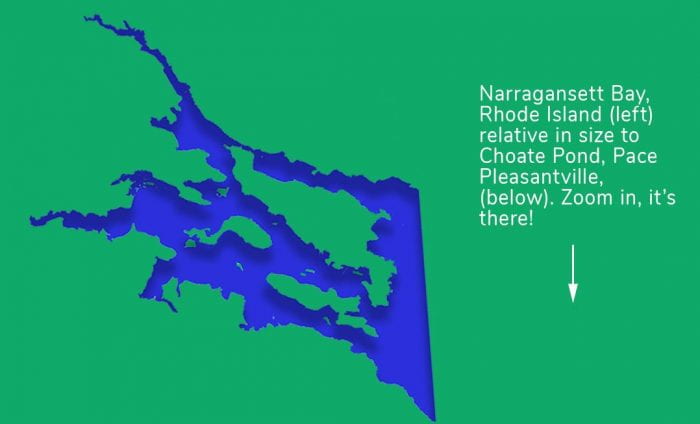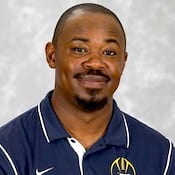Choate Pond is Like Narragansett Bay?
With full pond instrumentation students will use IoT and AI for learning and research.
Comparing the 93,888-acre Narragansett Bay, Rhode Island’s largest estuary, to the one-acre Choate Pond on the Pace Pleasantville campus might seem a stretch. But whether an ecologically significant estuary, or a human-made pond, waterbodies are under assault from impacts common to all manner of aquatic systems.

For example, one of Narragansett Bay’s problems has been summer hypoxia (oxygen deprivation) which causes fish kills, including in some of the side bays — an event we have also seen on our pond in recent years. In a blog post on the YSI website, Dr. Stephanie Smith, YSI Product Manager, wrote that the Narragansett Bay Fixed Site Monitoring Network (NBFSMN):
Helped stakeholders to understand the dynamics of hypoxia in the Bay and provided key information to managers. […] The hypoxic conditions which suffocated Greenwich Bay’s fish were far better understood and steps to manage hypoxia had been taken. There was an appreciation that even further improvements could be made with strategic investments, since fish kills did still occasionally occur
The NBFSMN uses many of the same YSI sensing instruments that Blue CoLab uses. These will be further deployed on Choate Pond as we develop an integrated, distributed sensor network that we will use for research, training education and, of course, pond management.
Expanded monitoring of Choate Pond through full instrumentation will also enable students to use the Internet of Things (IoT), Artificial Intelligence (AI) tools, and more advanced methods for learning and research. For example, through a customized online dashboard, students will be able to operate and manipulate a suite of devices to experiment with data relationships, device communication and interoperability, and predictive modeling.
Proper management of Choate Pond has challenged us at Pace University for years. Importantly, the pond’s chemical and ecological quality can also have an impact on the downstream Pocantico and Hudson Rivers. A thorough understanding of any aquatic ecosystem, large or small, requires almost full-time knowledge of its behavior and its response to external influences. That is our goal.
Justin Brandon

Justin Brandon served in the United States Army for 13 years. He is majoring in Professional Computer Studies at the Seidenberg School for Computer Science and Information Systems.
Recent Posts
Bringing games to life at Blue CoLab
Every game begins with an idea. For we, the Game Dev Team of Blue CoLab, inspiration struck when we were challenged to make learning about water and technology fun and interactive. The journey from a simple idea to a fully functional game kiosk is complex and challenging, but immensely rewarding.
What can machine learning teach us about water that we don’t already know?
Traditional analyses cannot handle vast amounts of water data. Machine learning can uncover vital information about water that would otherwise go undetected.
What Everyone Deserves: Real-Time Water Data
The Flint, Michigan water crisis alerted the public to how little we know about our drinking water and how late we learn.
The Dark Waters of Parkersburg, WV: A Warning to Us All
Advanced warning systems about drinking water contamination could save millions of people from exposure to dangerous contaminants.
Congress: Guarantee the Right-to-Know Drinking Water
Technology-based alerts are commonplace in daily life: storm alerts; car collisions; even asteroid near-misses. But not for water.

